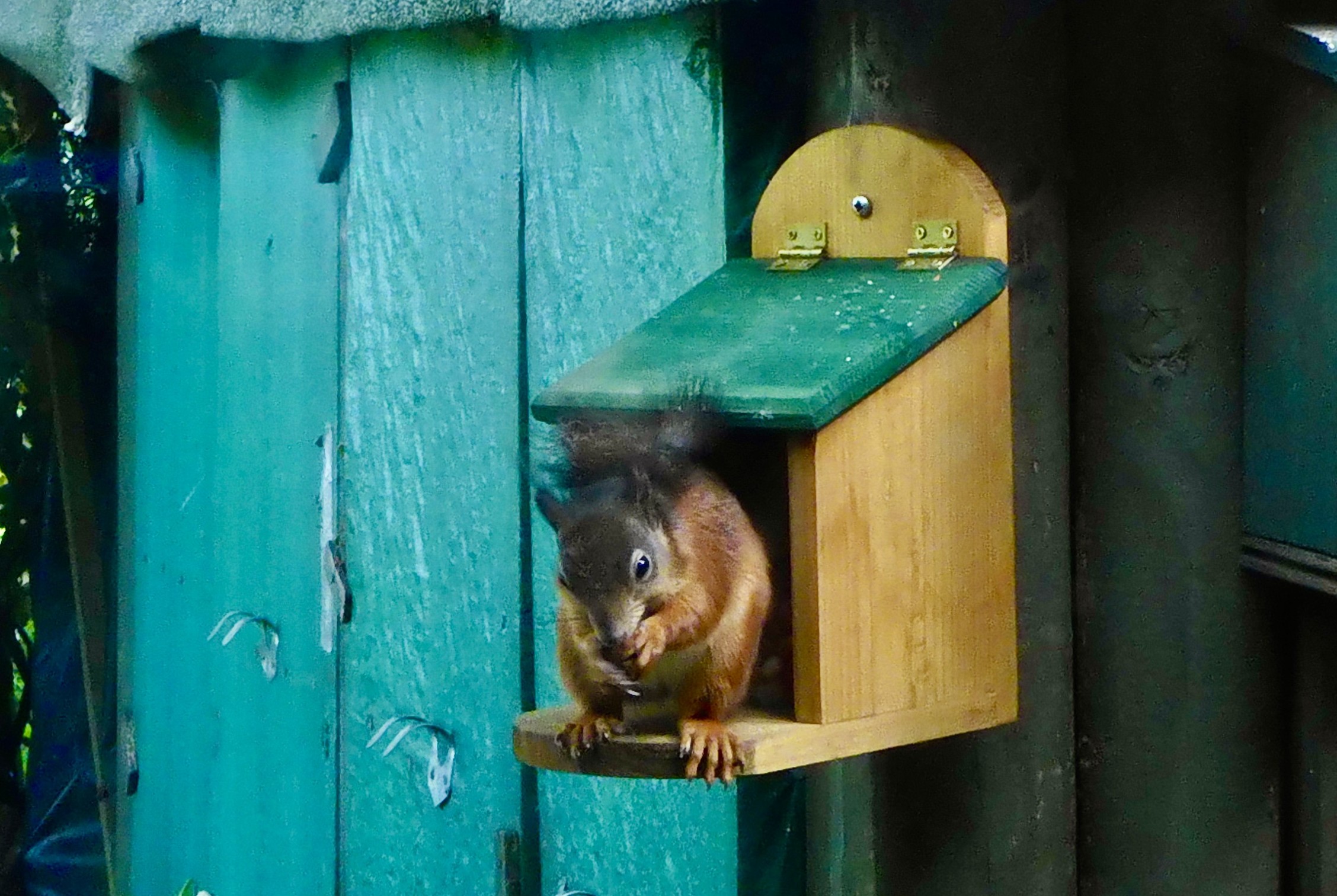GIVEN that I seem to be spending more time at a computer than when I worked for a living and the fact that Jill has been bending my ear to replace the old chair I use, I have splashed out and bought myself a purpose-made leather-clad replacement.
Within the first hour of using it I had to concede that my wife, as always, was right, because not only was I now very comfortable but the chair swivels, so when I need to focus on something other than a computer screen to gain inspiration all I have to do is swivel to the left and I have the view across the front garden and the fields beyond and to the right to ask for tea.
Now as I put fingers to keyboard, 20 metres away there is a blizzard of chaffinches swirling incessantly over the field, dropping down briefly to grab a few seeds before lifting back up and carrying out their version of a murmuration as they scatter for the trees disturbed by some unseen danger.
I have tried capturing these scenes but have not been successful, so readers will have to imagine them. Needless to say, all this activity attracts raptors such as kestrels, sparrowhawks and marsh harriers – little wonder, then, that the flocks are nervous.
The importance of winter green crops such as white radish is self-evident when witnessing these spectacles, and this year because ploughing has been late, the finch flocks have taken full advantage of the drying plants for shelter and the abundant seed released. Now that the vegetation has been flayed in preparation for ploughing, large numbers of pigeons are also taking advantage of the fallen seed.
Meanwhile, at home life goes on as normal, with the front hedge gang of house sparrows running sorties from their roadside vantage point to the front feeders unperturbed by the activity across the way.
A female blackcap and a male greenfinch chastise them for their gauche behaviour on the stations until a collared dove crashes the party, shedding seed everywhere. Next in comes one of the resident red squirrels, and it too drops seed on the floor. This in turn is picked up by a male chaffinch in all his breeding colours, a dowdy female chaffinch, one of the many robins we have as semi-residents and a bank vole that lives in the wood store.
I suspect that the feeder station chaffinches are a resident pair, unlike their cousins in the fields, who will soon have to be dispersing to their breeding grounds further afield. There has also been a noticeable decline in the number of goldfinches visiting the garden, and I have noted that when I am out and about in the countryside one of the reasons for this is that these colourful finches are already pairing up in readiness for nesting.
In the past week, while adhering to safe-distancing requirements, the Barn Owl Conservation teams have started visiting the many barn owl boxes that we maintain and monitor. During the early part of the winter during a period of heavy storms a number of trees containing boxes were either damaged or brought down.
It never ceases to amaze me how resilient wildlife can be, and this was demonstrated when we visited a site to prune a damaged tree and replace a box. The old habitation was hanging upside down jammed between the main trunk and a branch of a large alder, with half the roof and part of the floor torn away.
Having removed the box we carried out an inspection to assess what had been using it prior to the storm and what it may have been feeding on. It was clear that up until recently it was being used by a barn owl, as there were fairly fresh pellets on what was left of the inside of the roof.
There would have been just enough shelter for this bird and evidence, if it were needed, that once the new box was in place it would not be long before it was occupied. We placed fresh wood chippings and a few handfuls of the pellets from the old box inside the new one to make it feel and smell like home and will call back in the next couple of weeks to look for signs of occupation.
With amphibians now breeding and the weather slowly warming, the team of volunteers monitoring the small wetland areas in Grouville have been putting out refugia boards and camera traps to monitor activity and recording the plants that have the temerity to display their emerging flowers so that these can be positively identified.
For those that do not know what a refugia board is, it is a black corrugated felt board that is placed on fields and banks where it is likely that wildlife will be active. The boards act as shelter with their black colour and as heat traps which draw in small rodents, reptiles and sometimes toads that can then be recorded and added to the data set for the site.
Climbing into the shower one morning and casting my eyes down I was in time to avoid a common wasp queen trying to backstroke her way across the basin. How she got there I have no idea, as the door and window had been closed and there is certainly nowhere to hide in the fully tiled room. I carefully captured her in some tissue paper and popped her into a small jar in the kitchen, covered the top with a piece of cardboard, warned Jill and went off to shower. On my return to the kitchen Jill had transferred her into a cardboard tube, made a moveable lid and added some dry tissue for the queen to hide in and had added a drop of honey for her to top up her fuel reserves.
I was tasked with finding somewhere sheltered and dry to relocate her and I checked her this morning when I popped into the owlery and she had gone back into semi-hibernation, so – fingers crossed – she will emerge in a few weeks’ time as the weather warms to create a new colony of wasps that can later in the year come and pester us when we enjoy our lunch outdoors. It’s a small price to pay for an insect that does an amazing job of ridding us of the various fly and caterpillar species that are harmful to us, whether it be with the plants we grow or the food we eat.
Finally this week, a bee-related bit of bird news. The Jersey Beekeepers Association Bee Field is being developed to create a number of habitats to attract a wide range of wildlife, and as part of that project two ponds were dug last year. One of these has now received the stamp of approval from a pair of mallards who think that spring has already arrived and are busy raising 11 ducklings. I sincerely hope that they escape the attention of passing herring gulls and grow up to enhance all our lives.






